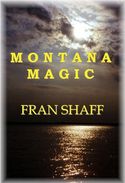FRAN SHAFF | It's Nothing Without the Conflict

 Conflict
ConflictWhat is conflict? How does it affect story?
In fiction, conflict comes in two forms, internal and external.
Internal conflict happens due to struggles within a character’s heart and mind.
External conflict occurs due to the environment the character lives in or is exposed to.
An example of titanic conflict, both internal and external occurs in the movie The Patriot During the American Revolution Mel Gibson's character is faced with an impossible choice--should he fight for his beloved country’s freedom, or should he stay behind to protect his family?
In choosing to stay with his family, Gibson’s character illustrates massive internal conflict. His choice goes against his sense of patriotism and makes him look cowardly to peers.
External conflict occurs when one of Gibson’s sons, a soldier in the revolution, is captured by the British and another of his sons, a child, is killed by the enemy. This external conflict, which happens in his environment, causes him to leave his duties with his family to fight for his country.
How does a writer effectively incorporate conflict into her story? A key way to find the answer to this question is to ask another question or two while organizing the plot line.
What can go wrong next? Or How can things get worse?
Let’s look at an example of plotting conflict using my contemporary romance Stolen Son.
My idea for the book’s premise was this: suppose a scrupulously honest widower discovered that his five-year-old son was illegally adopted. Conflict: his honesty is challenged by a legal duty to correct the problem. Worsening of conflict: he discovers it was his beloved late wife who kidnapped the baby and set in motion the illegal adoption.
He decides he must try to make things right. He learns the identity of the birth mother and takes a job working for her. Before he reveals his secret, he must know she’s a good woman, not someone who would put his son in danger. Worsening of conflict: as he discovers how wonderful she is, he falls in love with her, and she’s in love with him. Can he tell her the truth? At this point, he has everything to lose.
Internal conflict is monumental in this story. Guilt haunts this honest man as he seems to be doing everything against his own nature. And things don’t get any easier from this point on. Plenty more "goes wrong" and "gets worse”" before the end of this book (which does manage to reach an uplifting conclusion. I promise.). Conflict abounds from the heroine’s point of view too, as I’m sure you can imagine.
In a romance novel internal conflict pulls the hero and heroine together while external conflict keeps them apart.
In a mystery novel, internal conflict would be the force driving the protagonist toward solving the mystery. External conflict comes from forces throwing the hero off course. Suspense and thrillers are similar to mysteries in this way.
The importance of conflict in stories is not limited to the plot line. It is vital to develop rich characters who are bound to rub each other the wrong way in order to heighten conflict.
The greater the conflict, the more monumental the challenge to the characters, the more compelling the story.
In other words, conflict is the essence of story. In fact, conflict is story.
Fran Shaff, Award-Winning Author
website
To comment on It's Nothing Without The Conflict please click here.
Labels: fran Shaff


<< Home